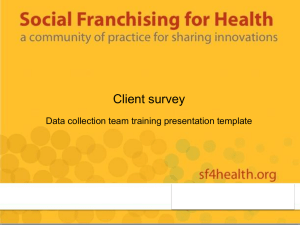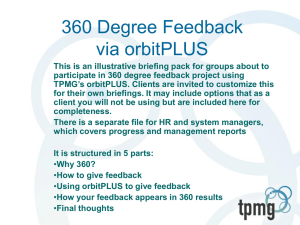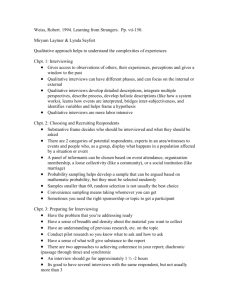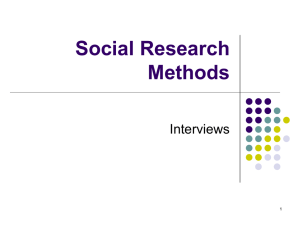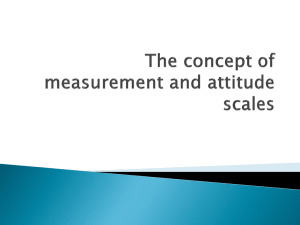CONDUCTING INTERVIEWS and Focus Groups
advertisement
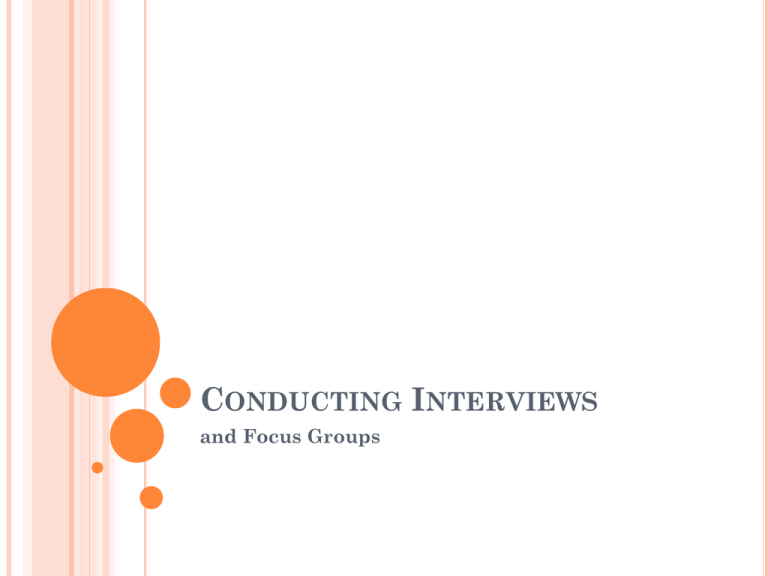
CONDUCTING INTERVIEWS and Focus Groups COMPARING QUALITATIVE INTERVIEW TYPES Quantitative Unstructured Semi-structured 1) 2) Qualitative No predeveloped questions in survey or interview guide Predeveloped questions – may be administered in no established order; questions may be added depending on circumstances. Predeveloped questions – established order - questions can be answered in the same way each time OPEN-ENDED INTERVIEWS ARE USED IN QUALITATIVE RESEARCH – DIFFERS FROM QUANTITATIVE APPROACHES. Set of questions generally focuses on one concept or set of experiences/perceptions to be measured (for example, comparison of products/candidates; perceptions of community needs; youth experiences). Response categories are not predetermined. Comparisons among responses are made after data analysis – decision to compare made based on obvious patterns in the data. Sampling – nonprobability – purposive or snowball sampling strategies are commonly used. INTERVIEW OR CONVERSATIONAL GUIDES List of open-ended questions is prepared in advance by the researcher. Purpose of the interview is to solicit detail and depth. Never, ever, use yes/no questions unless you plan to follow-up yes/no responses with a more detailed question. Never solicit one or two word responses without follow-ups. Be careful with why questions – you will probably need follow-ups. “Please explain” or “Describe” may be better. “How” questions usually produce detailed responses. What questions sometimes result in one or two word responses and should be used sparingly. Questions should focus on the interviewee’s perspectives, opinions, attitudes, and experiences. You also can ask about events, life history, and the respondent’s perceptions of others, culture, or the respondent’s surrounding environment. Asking for explanations about the respondent’s opinions or perceptions is also important. RUBIN AND RUBIN DESCRIBE THE PROCESS OF QUALITATIVE INTERVIEWS AS SOLICITING Vividness – ask respondents to give examples or “draw a picture” that includes not just facts but emotion. How did the event make the respondent feel? Nuance – are things always what they seem or simple (i.e. black and white)? What other things should be considered. Question broad statements. Look for exceptions. Richness – interview should contain many ideas and different themes. Encourage respondent to elaborate – ask for more examples, especially when responses are unexpected. TYPES OF QUESTIONS CAN INCLUDE Questions should focus on the interviewee’s perceptions, opinions, attitudes, and experiences. You also can ask about events, life history, and the respondent’s perceptions of others, culture, or the respondent’s surrounding environment. Asking for explanations about the respondent’s opinions or perceptions is also important. INTERVIEWS HAVE SEVERAL COMPONENT PARTS Main questions identified in advance (6-10). Follow-up questions (for example, asking for more detail or nuance in individual responses). Probes – techniques used to keep a discussion going. Questions can be skipped or order varied depending on the flow of conversation. INTERVIEW GUIDE CONSTRUCTION TIPS Only address one concept per question, although qualitative questions may contain subparts and/or follow-up questions/probes Don’t write the question to solicit a specific response Questions should be tactful and should not invoke a social stigma. You may use filter questions – (yes/no or short word responses); respondents asked successive questions based on one response. Demographic questions are generally asked at the beginning or end of interview. You may have the respondent fill out a demographic questionnaire in advance of the interview. 1. 2. 3. 4. 5. 6. Can you describe how you first became aware of your deafness How do you see yourself today, in terms of your deafness? What does your deafness mean to you? Can you describe any particularly difficult or traumatic experiences in your life related to your deafness? Can you describe how you fit into deaf culture? To what extent do you consider yourself active in both the deaf world and the hearing world? ETHICAL CONSIDERATIONS Interviews are not anonymous, but you must provide confidentiality. Respondents should be asked to sign a consent form. Respondents should be given a consent form to keep in addition to the one signed and returned to the interviewer. Most face-to-face interviews are taped. The respondent must agree to be audio-taped or video-taped. The researcher can still take notes on the interview if consent to be taped is not granted. Tapes and notes should be kept in a secure place. Anything that could identify the respondent (such as tapes) should be destroyed at the conclusion of the research. The only exception to this is in field research – consent to participate is inferred when respondent speaks to researcher. The process of entry or acceptance is the procedure used to establish consent in ethnography and field research. For most formal interviews, respondents should receive a cover letter that introduces the researcher and contains much of the information in the consent form (human subjects protections etc). FOCUS GROUPS MAY ALSO BE USED TO CONDUCT QUALITATIVE RESEARCH. FOCUS GROUPS: Are used to assess people’s perceptions about programs, candidates, products or services. Are used to generate recommendations for changing programs, products, campaign strategies, and services. Are often used in conjunction with needs assessments or to generate ideas or explore themes that can be used in descriptive studies. Are used to answer questions about how or why programs work. May be used in conjunction with other research methods. Include six to eight participants who are selected using purposive sampling methods – some researchers will try to find a “representative sample”; others will try to find people with similar characteristics – but will want a variety of opinions. Utilize a semi-structured interview guide with 6-8 questions. Require that a facilitator ask each of the questions and solicit responses from members. Are used to generate a common response or a consensus from group members. FOCUS GROUP EXAMPLES: http://video.google.com/videoplay?docid=6617577456912837335 http://www.youtube.com/watch?v=Fklf6Y946jI

